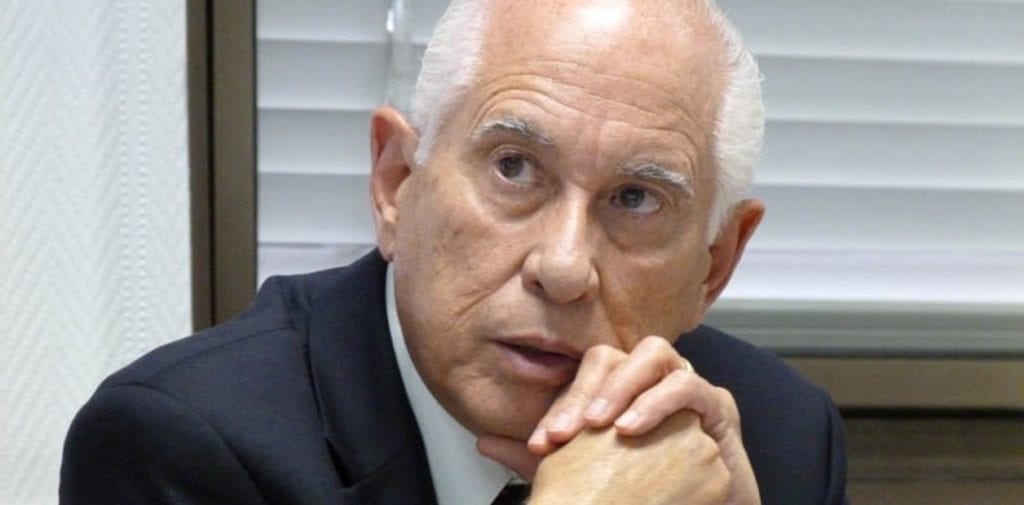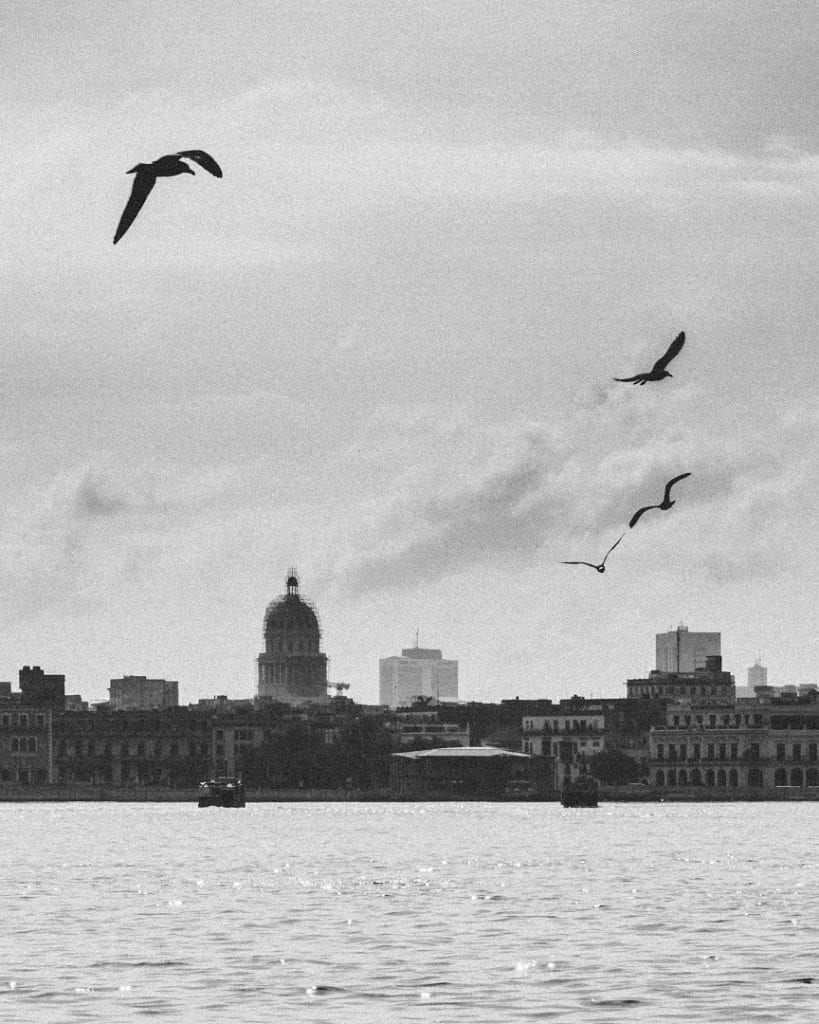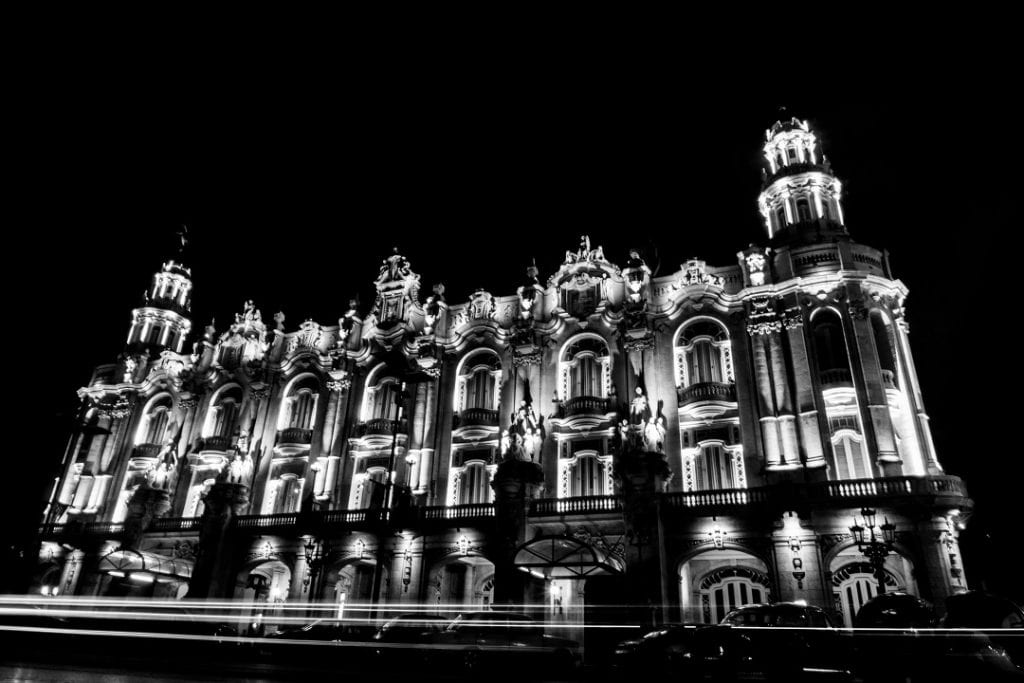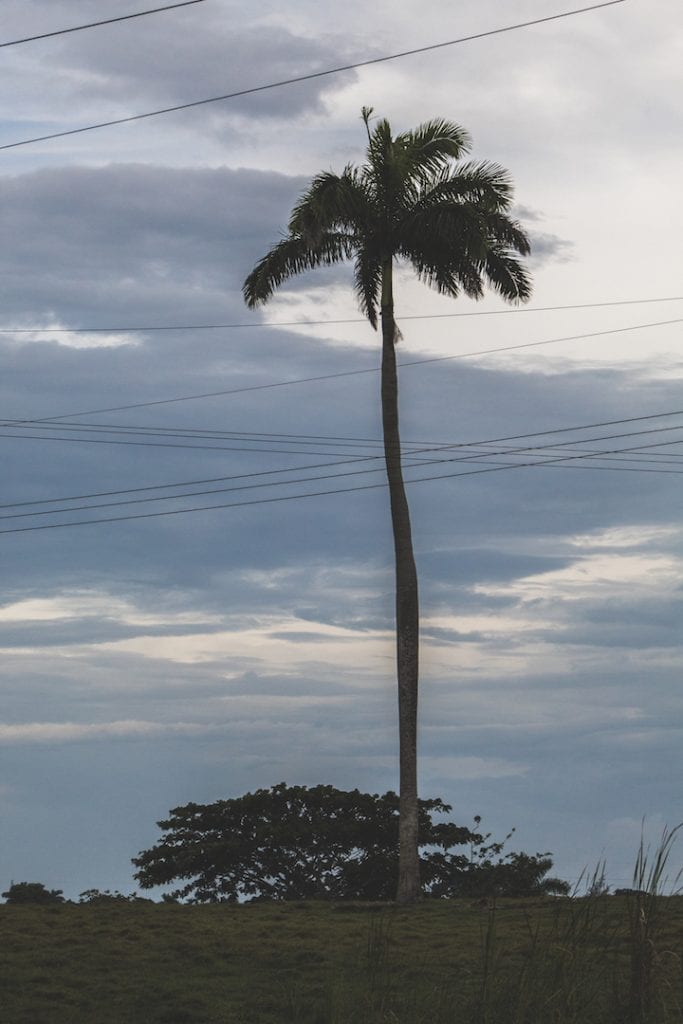Market Socialism, a Proposal for Cuba by Carmelo Mesa-Lago
By Vicente Morin Aguado

HAVANA TIMES – From the pages of the New York Times, Carmelo Mesa-Lago, a Cuban economist and professor at the University of Pittsburgh, recently published an opinion piece with his political proposal for the economy of subversive implications.
We asked Mesa the most prolific of economists dedicated to the Cuban reality several clarifications about his brief but forceful article, which we post below.
He notes that despite the staggering subsidies of foreign aid received, first from the Soviet Union and later from Venezuela, “the performance of the economy has been depressing.”
HT: Subsidies from a foreign power vs. the embargo, which of these factors weighs more on the balance of the disaster?
Carmelo Mesa Lago: This question is difficult to answer. If the official Cuban figures for the cost of the embargo are used, it would be higher, but those calculations are not reliable. Twenty-five years ago, the embargo was a very serious problem for Cuba because it was isolated in the Western Hemisphere, but Cuba now has trade with at least 80 countries, including the US, as well as investments from multiple nations.

The embargo still causes damage, such as sanctions against international banks that carry out transactions with the State, but the fundamental cause of the problems has been Cuba’s inability to generate enough exports to finance essential imports.
The subsidies of the USSR were very beneficial because the Soviets paid between four and eleven times the price of sugar on the world market, twice the price for nickel and sold oil to Cuba at a price lower than the world market. Between 1960 and 1990, these price subsidies represented US $39.36 billion non-reimbursable; In total (including credits to cover deficits in the trade balance and direct investments), Cuba received $65 billion of which it paid only $500 million. So, in those 30 years the Soviet subsidies were greater than the cost of the embargo.
In the case of Venezuela, that government pays Cuban doctors seven times the salary of a Venezuelan doctor in the public sector, that is, there is a hidden subsidy regarding the cost of oil supplied by this country.
HT: If we talk about reforms, mother earth is the origin of every economy, right now there are people who sleep at the doors of some stores, waiting for the next opening so as not to miss the few and expensive foods that are sold.

CML: Farmers must obligatorily sell to the State about 70% of their harvests at a price that the government sets below the market price. In China and Vietnam, the farmer decides what to plant, to whom to sell and sets the price, there are no limits to the investment and the land contracts are for 50 years or for an indefinite period.
These incentives explain how, in relatively few years, both Asian countries are self-sufficient in food and, especially Vietnam, generate a surplus to export; It is the second world exporter of rice and sells 250,000 tons to Cuba, a country that imports around US $1,500 billion of food per year, most of which could be produced in the country. [Vietnam is also the world’s #2 coffee exporter after Brazil.]
HT: Speaking of foreign investments, how does the silenced clamor to be able to pay the workers their full salary in hard currency influence?
CML: Foreign investors are not allowed to hire and pay their employees directly, nor can they fire them. This is done through a Cuban state agency and discourages both foreign investment and workers since the relationship between effort and remuneration is weakened. [The workers only receive a small portion of what the companies pay to the State employment agency.]

HT: Another key factor regarding the essential promotion of foreign investments, you said, is in the monetary unification? Could you clarify?
For several reasons: 1) the monetary duality does not allow us to identify which companies are productive and which are not, and the same happens with the profitability of exports; 2) duality generates distortions that affect the entire economy; 3) while in the state economy the exchange is 1 CUC = 1 CUP, among the population the change is 1 CUC = 25 CUP; 4), in addition, workers receive their salaries in national pesos (CUP) but they have to buy most products in convertible pesos (CUC).
HT: With about 40 books dedicated entirely to his homeland, the Pittsburgh professor makes an urgent call to change which collides with the arteriosclerosis of the ruling elite and even with the newly endorsed constitutional scaffolding.
CML: Unlike China and Vietnam, who recognized that the private sector is an important driver of growth, the ideological reasoning in Cuba behind these absurd limitations is to avoid a concentration of property and wealth.
The market socialism model of China and Vietnam, under the Communist Party government, could actually provide a way forward.
———-
The New York Times
Opinion
There’s Only One Way Out for Cuba’s Dismal Economy
The island’s economy is neither efficient nor competitive. To move forward it must deepen and accelerate reforms. The market socialism model could provide a way.
By Carmelo Mesa-Lago
Professor Mesa-Lago is an expert on Cuba’s economy.
March 28, 2019
For the past 60 years, Cuba has been unable to finance its imports with its own exports and generate appropriate, sustainable growth without substantial aid and subsidies from a foreign nation. This is the longstanding legacy of Cuba’s socialist economy.
The island’s economic dependence began with Spain in the colonial era, continued with the United States during the first republic and expanded significantly with the Soviet Union and, finally, with Venezuela in the current century.
Between 1960 and 1990, the Soviet Union gave Cuba $65 billion (triple the total amount of aid that President John Kennedy’s Alliance for Progress gave Latin America). At its peak in 2012,Venezuelan aid, subsidies and investment amounted to or close to 12 percent of the gross domestic product. And yet, despite the staggering foreign aid subsidies it has received, the economy’s performance has been dismal.
In the past seven years, growth has been a third of the officially set figure needed for adequate and sustainable growth, while investment has been one third of the required rate. Industrial, mining and sugar production are well below 1989 levels, and the production of 11 out of 13 key agricultural and fishing products has declined. Cuba is now facing its worst economic crisis since the 1990s.
Tourism has been a bright spot for Cuba. From 2007 to 2017, visitors to the island doubled, largely thanks to the arrival of more Americans, whose numbers grew considerably after President Barack Obama eased diplomatic relations in 2015. But Hurricane Irma and the tightening of travel restrictions by President Trump (like barring American tourists from using hotels and restaurants run by Cuba’s military) and the alert declared by the administration after the sonic attacks on United States diplomats in Havana led to a drop in tourism during the end of 2017 and the first half of 2018. Tourism rebounded in September, driven by a cruise industry that offers customers lodging, meals and tours. Those visitors spend about 14 percent of what those arriving by air spend.
Since the revolution, Cuba has run a large annual fiscal deficit in its merchandise trade. But since the start of the century, it has benefited from a surplus on the services balance because of the growth in exports of medical and teaching services sold mainly to Venezuela. This surplus exceeded the deficit in the merchandise trade. But as Venezuela’s economy weakened, the Cuban surplus decreased drastically. In addition, Venezuela’s oil supply halved, and overall trade fell by 27 percent.
Cuba’s woes are a result of the inefficient economic model of centralized planning, state enterprises and agricultural collectivization its leaders have pursued despite the failure of these models worldwide. In his decade in power, President Raúl Castro tried to face his brother Fidel’s legacy of economic disaster head on by enacting a series of market-oriented economic structural reforms. He also opened the door to foreign investment, but so far, the amount materialized has been one-fifth of the goal set by the leadership for sustainable development.
Unfortunately, the pace of reforms has been slow and subject to many restrictions, disincentives and taxes that have impeded the advance of the private economy and desperately needed growth. It is time to abandon this failed model and shift to a more successful one as in China and Vietnam.
In 2018, Miguel Díaz-Canel, the first of a new generation of leaders born after the revolution, took office. Trapped by Mr. Castro’s program, he has promised “continuity.” The new Constitution, approved on Feb. 24 through a referendum, doesn’t introduce any significant change to its prevailing model of centralized planning and state dominance over the means of production and land.
The only way out of the hole for Cuba would be to accelerate and deepen reforms. China and Vietnam’s market socialism model under Communist Party rule could provide a way forward. But opposition persists from the old guard, who are now well into their 80s but still hold key positions in the party and in the government.
Poor agricultural production, the result of collectivized agriculture, causes the island to spend $1.5 billion a year on food imports. As part of his agrarian reform, Mr. Castro began leasing fallow state-owned land to farmers through 10-year contracts — now increased to 20 years — that may be canceled or renewed depending on the farms performance. Farmers must sell most of their crops to the government at prices set by the state, which are below market prices.
The Chinese and Vietnamese reforms granted farmers land for 50 years or for an indefinite period of time and allowed the farmers to sell their products to whomever they wanted, at prices set by supply and demand. In a few years both countries achieved food self-sufficiency and exported the surplus, particularly Vietnam, which sells Cuba 250,000 tons of rice annually that could be produced domestically. If Cuba were to introduce this type of reform, it would solve the chronic food shortage while eliminating imports.
Around 13 percent of the country’s work force is self-employed. It generates 12 percent of the G.D.P., through activities like providing lodging and dining services to foreign tourists. But the government has imposed serious restrictions and suspended certain types of licenses, and businesses are taxed according to the number of employees they hire. The ideological reasoning behind these absurd limitations are to avoid a concentration of property and wealth. Conversely, China and Vietnam recognized that the private sector is an important driver of growth.
If reform is carried out and foreign investors are allowed to hire and pay a full salary directly to their employees, there will be a significant improvement in the economy and the government can undertake the desperately needed monetary unification that will attract more investment and eliminate the economic distortions that plague the economy.
Carmelo Mesa-Lago is a professor emeritus of economics and Latin American studies at the University of Pittsburgh. He has published some 45 books on Cuba, most recently “Voices of Change in Cuba.”






Gareth, I agree with most of what you have to say. However, there is one misleading aspect to your comments. It was actually a scathing attack article written by Fidel Castro a few days after Obama left Cuba that set the tone for the rest of the Communist Party and government to attack, in the weeks and months after, his approach to improving relations and the Cuban economy, and making it clear that they were opposed to his ideas, even if the vast majority of Cubans, as you noted, were enthused by Obama’s statements. It was actually the Cuban government side that blew the opportunity for making the types of changes that might have avoided the continued depression that affects the island. Trump was just icing on the cake and frankly I think the Cuban leaders are much more comfortable with Trump as he represents the eternal enemy which justifies any and all domestic problems and policy errors. Here is the link to a Havana Times article from March 28, 2016, I found with the link to Fidel’s attack on Obama. https://havanatimes.org/?p=117710
This is singularly the most important and most relevant article HT has ever published. I have recently returned from my fourth trip to Cuba. I love it there. I personally witnessed and experienced, three years ago, the euphoria of the Cuban people at the arrival of President Obama and his enlightened proposals for the island. Followed by the historic arrival of The Rolling Stones and their free and so exciting concert. There was an optimism and hope in the populace that I’d never experienced before. And then along came President Trump who reversed everything and upended that oh so enlightened image of the future for most Cubans. Once again the economic situation has retracted markedly to where it was decades ago. The only readily visible changes I see are the so obvious success of the private or semi private (50%/50%?) businesses. Typically restaurants and B&B’s. Just like in China and Vietnam, which are still communist countries, where the Governments have recognized the natural entrepreneurial spirit of it’s people why can’t the Cuban Government do the same. They will NOT be disappointed! Surely isn’t that enough to inspire the government to advance this policy. The other noticeable thing for me is the willingness and openness of the people, especially the younger generations to speak about the living conditions and criticize the Government. Obviously this is the main reason why the Government and Etecsa still refuse to allow Cubans universal access to the Internet. The power of the people can (and should be) greater than any authoritarian regime. And regarding the chronic state of the economy, (what economy!), the old Soviet maxim always comes into my mind : “They pretend to pay us and we pretend to work!).